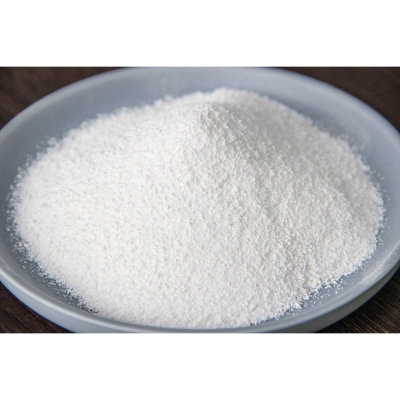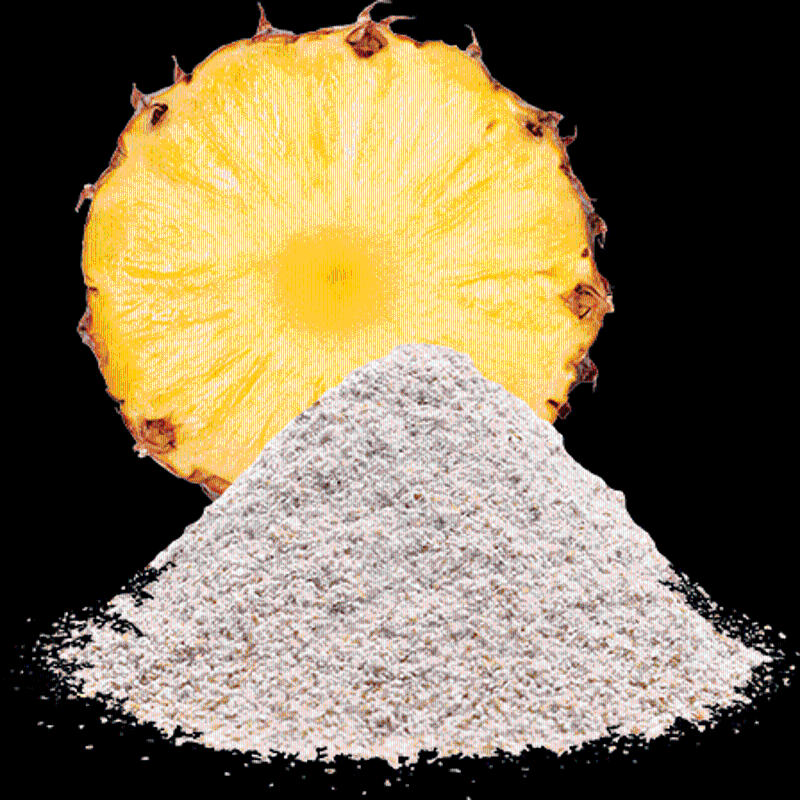Reasonable use of enzymes
-
Last Update: 2020-07-02
-
Source: Internet
-
Author: User
Search more information of high quality chemicals, good prices and reliable suppliers, visit
www.echemi.com
enzyme is a protein catalyst produced by living cells with a biocatalytic response capabilityThe basic function of enzyme is to improve feed utilization rate, improve the performance of livestock and poultry production, break down the anti-nutrition factors in feed, and reduce the pollution of animal husbandry production to the environmentdPd
At present, there are dozens of enzyme preparations on the market, the appropriate selection and rational use of enzyme preparations should follow the following principlesdPd
First, according to the type of animal and the age of each other to use different digestive enzyme preparationsdPd
In the special stage of growth and development and uncomfortable breeding and management conditions, there will be insufficient endogenous digestive enzyme secretion, such as imperfect digestive enzyme development in young animals, reduced ability of digestive enzyme secretion in elderly animals, and animal digestive enzyme secretion disorders after stress or disease infectionThe selection of appropriate digestive enzyme preparation can make up for the lack of endogenous digestive enzymes in livestock and poultry, so as to improve its production performance and feed utilization rateThe secretion of the pancrease digestive enzyme of the broiler chicken with the broiler is equal, but the amount of meat-chicken is much larger than the amount of chicken in the egg, and the broiler chicken has to deal with more of the meat-eater at the same level of digestive enzymesTherefore, it is particularly important to supplement the exogenous digestive enzyme in its diet, and the feeding effect is more significantdPd
Temperature and acidity are the two environmental factors that affect the effect of enzymes, and each enzyme has its own most suitable (with maximum activity) of the environment temperature and acidity degree that maintain its structural and property stability The study shows that the addition of exogenous digestive enzymes to pig and poultry diet has a certain effect on the secretion of endogenous digestive enzymes dPd
Second, for the type of diet (target substrate) to choose enzyme preparations dPd
Because the substrate of the enzyme action is specific, the characteristics of feed raw materials must be considered in application in order for the enzyme formulation to exert excellent effect The composition and chemical structure of different feed feed raw materials have their own specificity, such as wheat and rye in the main non-starch polysaccharides are arabic xylitose, while the main non-starch polysaccharides in barley and oats in addition to arabic xylitose, as well as beta glucan, soybean seeds in the main non-starch polysaccharides is fritcle It can be seen that the enzyme preparation spent on wheat-soy meal-type diet should choose xylitose, while the enzyme for barley-somemeal-type diet should choose beta glucotose, pectinase, glutase and cellulase dPd
Third, according to the content of the target substrate to determine the appropriate amount of enzyme preparation dPd
If the substrate content in the diet is too low, the addition of enzyme preparation will not produce obvious improvement effect, if the substrate content in the diet is too high, the amount of enzyme added or the activity of enzyme is insufficient, then the enzyme preparation can degrade the limited number of substrates, the improvement effect is not good This requires that there should be a suitable proportion relationship between the substrate and the amount of enzyme preparation, and the amount of enzyme preparation should be determined according to the content of the target substrate in production dPd
Fourth, according to the nutritional improvement value of the enzyme preparation, the diet formula is optimized dPd
There are two ways to use enzymes, one is to add them directly to the diet This method is simple and easy, although it can improve the performance of livestock and poultry production, but will increase the cost of feed Second, according to the enzyme preparation to improve the performance of livestock and poultry production and improve the degree of feed utilization, the appropriate reduction of the nutritional level of the diet or the use of cheap feed raw materials to prepare the diet, so that it can be done to ensure that animal production performance does not decline in the case of reducing feed costs The degree of perfection achieved by the second method depends on the skilled person's understanding of the technical parameters of the enzyme preparation and feed raw material If the enzyme supplier can put forward the size of feed nutrient digestion rate that can be improved by an enzyme on the basis of full scientific experiments, and use these nutritional improvement values to adjust the classical feed nutrition parameters when modulating the formula, and then calculate it, a high degree of accuracy can be achieved, so as to achieve the true optimization of the formula dPd enzyme is a biocatalytic reaction catalyst produced by living cells The basic function of enzyme is to improve feed utilization rate, improve the performance of livestock and poultry production, break down the anti-nutrition factors in feed, and reduce the pollution of animal husbandry production to the environment dPd
At present, there are dozens of enzyme preparations on the market, the appropriate selection and rational use of enzyme preparations should follow the following principles dPd
First, according to the type of animal and the age of each other to use different digestive enzyme preparations dPd
In the special stage of growth and development and uncomfortable breeding and management conditions, there will be insufficient endogenous digestive enzyme secretion, such as imperfect digestive enzyme development in young animals, reduced ability of digestive enzyme secretion in elderly animals, and animal digestive enzyme secretion disorders after stress or disease infection The selection of appropriate digestive enzyme preparation can make up for the lack of endogenous digestive enzymes in livestock and poultry, so as to improve its production performance and feed utilization rate The secretion of the pancrease digestive enzyme of the broiler chicken with the broiler is equal, but the amount of meat-chicken is much larger than the amount of chicken in the egg, and the broiler chicken has to deal with more of the meat-eater at the same level of digestive enzymes Therefore, it is particularly important to supplement the exogenous digestive enzyme in its diet, and the feeding effect is more significant dPd
Temperature and acidity are the two environmental factors that affect the effect of enzymes, and each enzyme has its own most suitable (with maximum activity) of the environment temperature and acidity degree that maintain its structural and property stability The study shows that the addition of exogenous digestive enzymes to pig and poultry diet has a certain effect on the secretion of endogenous digestive enzymes dPd
Second, for the type of diet (target substrate) to choose enzyme preparations dPd
Because the substrate of the enzyme action is specific, the characteristics of feed raw materials must be considered in application in order for the enzyme formulation to exert excellent effect The composition and chemical structure of different feed feed raw materials have their own specificity, such as wheat and rye in the main non-starch polysaccharides are arabic xylitose, while the main non-starch polysaccharides in barley and oats in addition to arabic xylitose, as well as beta glucan, soybean seeds in the main non-starch polysaccharides is fritcle It can be seen that the enzyme preparation spent on wheat-soy meal-type diet should choose xylitose, while the enzyme for barley-somemeal-type diet should choose beta glucotose, pectinase, glutase and cellulase dPd
Third, according to the content of the target substrate to determine the appropriate amount of enzyme preparation dPd
If the substrate content in the diet is too low, the addition of enzyme preparation will not produce obvious improvement effect, if the substrate content in the diet is too high, the amount of enzyme added or the activity of enzyme is insufficient, then the enzyme preparation can degrade the limited number of substrates, the improvement effect is not good This requires that there should be a suitable proportion relationship between the substrate and the amount of enzyme preparation, and the amount of enzyme preparation should be determined according to the content of the target substrate in production dPd
Fourth, according to the nutritional improvement value of the enzyme preparation, the diet formula is optimized dPd
There are two ways to use enzymes, one is to add them directly to the diet This method is simple and easy, although it can improve the performance of livestock and poultry production, but will increase the cost of feed Second, according to the enzyme preparation to improve the performance of livestock and poultry production and improve the degree of feed utilization, the appropriate reduction of the nutritional level of the diet or the use of cheap feed raw materials to prepare the diet, so that it can be done to ensure that animal production performance does not decline in the case of reducing feed costs The degree of perfection achieved by the second method depends on the skilled person's understanding of the technical parameters of the enzyme preparation and feed raw material If the enzyme supplier can put forward the size of feed nutrient digestion rate that can be improved by an enzyme on the basis of full scientific experiments, and use these nutritional improvement values to adjust the classical feed nutrition parameters when modulating the formula, and then calculate it, a high degree of accuracy can be achieved, so as to achieve the true optimization of the formula dPd (
)
This article is an English version of an article which is originally in the Chinese language on echemi.com and is provided for information purposes only.
This website makes no representation or warranty of any kind, either expressed or implied, as to the accuracy, completeness ownership or reliability of
the article or any translations thereof. If you have any concerns or complaints relating to the article, please send an email, providing a detailed
description of the concern or complaint, to
service@echemi.com. A staff member will contact you within 5 working days. Once verified, infringing content
will be removed immediately.







